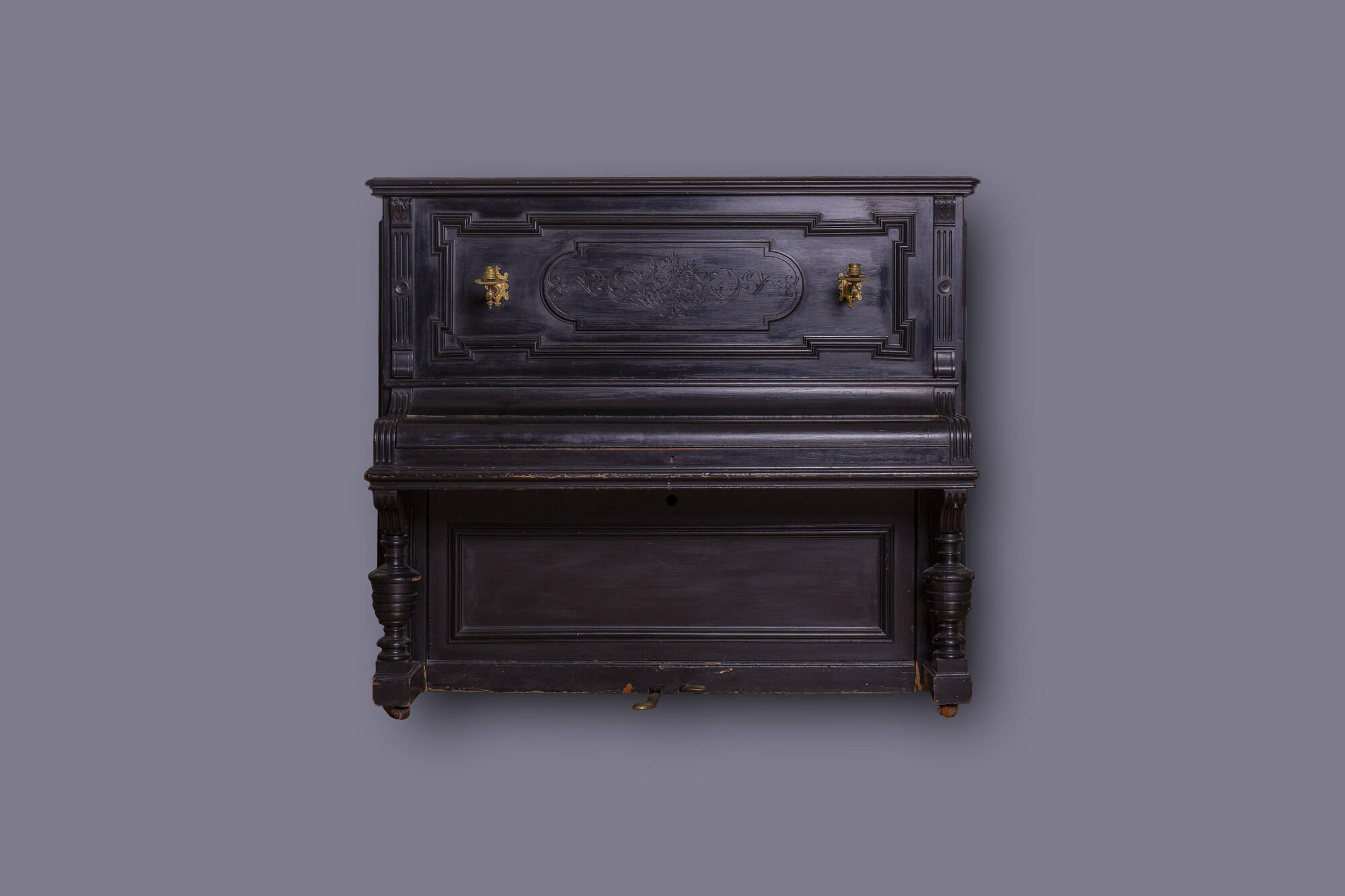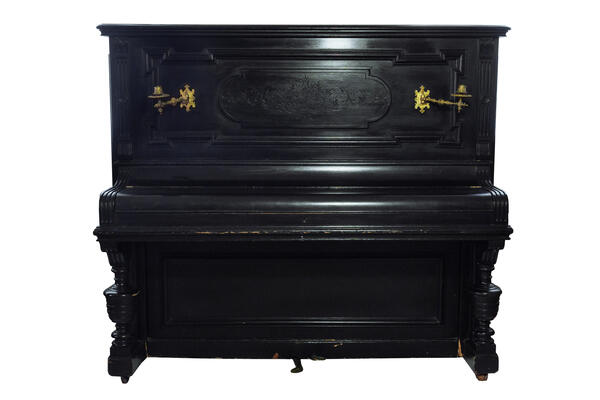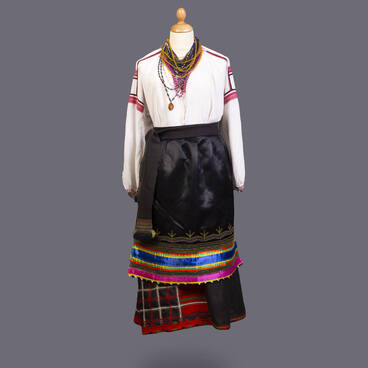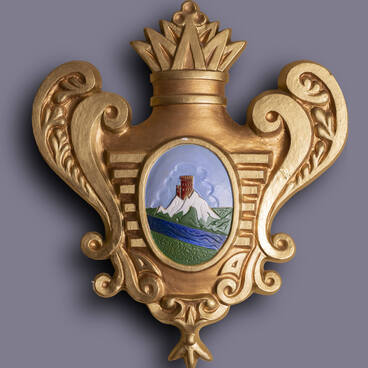Yakov Davidovich Becker, also known as Jacob Becker, German-born pianist, thinker, inventor and innovator, was born in 1811 in Rhineland-Palatinate, Germany. He founded a factory in St. Petersburg which existed from 1841 to 1918. Jacob Becker was the first to introduce American and European piano-making technology in Russia. The firm was a supplier of the court of the Russian and Austrian emperors, all Russian Grand Dukes, the Russian Musical Society, and the St. Petersburg and Moscow conservatories.
This exhibit of the Stary Oskol Museum of Local Lore was made by the piano factory of Yakov Becker in the mid-19th century. On the upper part of the cast-iron frame of the mechanism there is an inscription in cast letters “Ya. Becker — His Majesty’s Supplier St. Petersburg”, under the lid of the case is the number of the instrument (16953). The case of the instrument is made of wood and covered with black lacquer. On the front panel of the piano is a decorative patterned plaque flanked by two movable carved candlesticks made of yellow metal. The wooden keys are covered with ivory plates on top. The carved consoles (the legs under the keyboard) are massive. The pedals are made of metal.
The upright piano is a keyboard musical instrument with a hammer-type action, designed specifically for room music-making in small venues. The upright piano is a smaller version of the piano, in which the strings, soundboard and action are arranged vertically rather than horizontally, so it takes up much less space than the piano. The upright piano has been an extremely popular instrument in Western Europe from the late 18th century. In Russia, the piano manufacturing business was primarily associated with St. Petersburg. In the 18th century alone, more than 50 piano makers worked there.
The development of the factory production of pianos in the first half of the 19th century was influenced by the activity of the first Russian piano manufacturer, the supplier of the Imperial Court, the English master G. Faveriere, the German masters J.-A. Tischner, K.-I. Wirth, A.-H. Schröder, I.-F. Schröder, since 1840 — the Belgian H.-G. Lichtenthal. Today we know the names of more than 600 piano makers who worked in Russia before the revolution of 1917.
This exhibit of the Stary Oskol Museum of Local Lore was made by the piano factory of Yakov Becker in the mid-19th century. On the upper part of the cast-iron frame of the mechanism there is an inscription in cast letters “Ya. Becker — His Majesty’s Supplier St. Petersburg”, under the lid of the case is the number of the instrument (16953). The case of the instrument is made of wood and covered with black lacquer. On the front panel of the piano is a decorative patterned plaque flanked by two movable carved candlesticks made of yellow metal. The wooden keys are covered with ivory plates on top. The carved consoles (the legs under the keyboard) are massive. The pedals are made of metal.
The upright piano is a keyboard musical instrument with a hammer-type action, designed specifically for room music-making in small venues. The upright piano is a smaller version of the piano, in which the strings, soundboard and action are arranged vertically rather than horizontally, so it takes up much less space than the piano. The upright piano has been an extremely popular instrument in Western Europe from the late 18th century. In Russia, the piano manufacturing business was primarily associated with St. Petersburg. In the 18th century alone, more than 50 piano makers worked there.
The development of the factory production of pianos in the first half of the 19th century was influenced by the activity of the first Russian piano manufacturer, the supplier of the Imperial Court, the English master G. Faveriere, the German masters J.-A. Tischner, K.-I. Wirth, A.-H. Schröder, I.-F. Schröder, since 1840 — the Belgian H.-G. Lichtenthal. Today we know the names of more than 600 piano makers who worked in Russia before the revolution of 1917.



